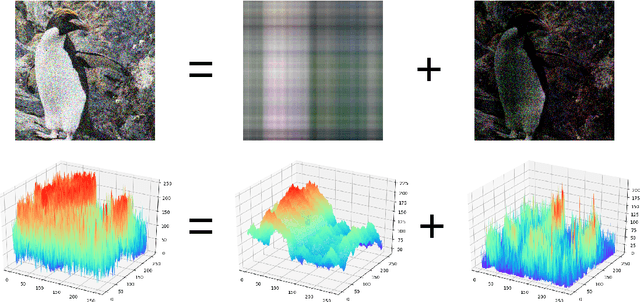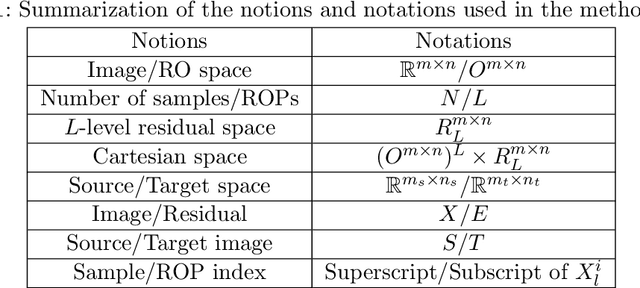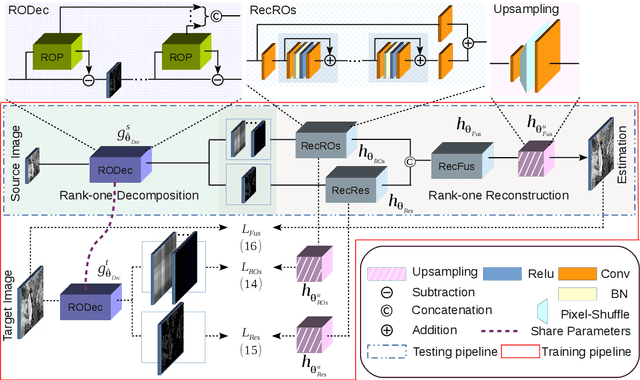Rank-One Network: An Effective Framework for Image Restoration
Paper and Code
Nov 25, 2020



The principal rank-one (RO) components of an image represent the self-similarity of the image, which is an important property for image restoration. However, the RO components of a corrupted image could be decimated by the procedure of image denoising. We suggest that the RO property should be utilized and the decimation should be avoided in image restoration. To achieve this, we propose a new framework comprised of two modules, i.e., the RO decomposition and RO reconstruction. The RO decomposition is developed to decompose a corrupted image into the RO components and residual. This is achieved by successively applying RO projections to the image or its residuals to extract the RO components. The RO projections, based on neural networks, extract the closest RO component of an image. The RO reconstruction is aimed to reconstruct the important information, respectively from the RO components and residual, as well as to restore the image from this reconstructed information. Experimental results on four tasks, i.e., noise-free image super-resolution (SR), realistic image SR, gray-scale image denoising, and color image denoising, show that the method is effective and efficient for image restoration, and it delivers superior performance for realistic image SR and color image denoising.
 Add to Chrome
Add to Chrome Add to Firefox
Add to Firefox Add to Edge
Add to Edge